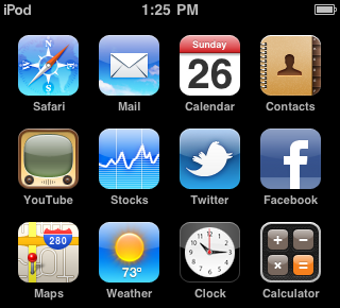

- #IPHONE EXPLORER IPHONE 5 HOW TO#
- #IPHONE EXPLORER IPHONE 5 FULL#
- #IPHONE EXPLORER IPHONE 5 OFFLINE#
For more in-depth detail, check out the Safari Developer’s corner: The iPhone browser is also in the forefront of HTML5, so dig into the spec. It’s a real browser so your HTML is exactly the same. Here you can see the difference side by side.
#IPHONE EXPLORER IPHONE 5 OFFLINE#
This can affect the user interface of your offline HTML5 app. When you are in web mode, it has a screen size of 320px x 356px. That is why you need access to a web server that can set HTTP headers.Ī quick note when designing your application: When you are in app mode, you have a screen size of 320px x 460px. One tricky part to this whole thing is that the manifest (the list of files that need to be cached offline) has to be passed with a filetype Header set to text/manifest.

You can also list a few URLs that should not be cached, but this isn’t pertinent for our offline app (if you’re interested, read about this in the documentation). The browser will keep those files offline. ) or relative to the manifest file ( /picture.png). The syntax of this file is simple: just list the locations of your files in either absolute (e.g.

It will cache those files (to a fault, sometimes). Application caching allows browsers to determine in advance all the files a web page will need for the web page to work. This is a new standard, you can read the spec here. By keeping your scope small, you can get things done faster. Simple: Start with a few simple ideas and execute it.Sparse: You should try to keep the amount of files you deal with as low as possible.Small: This is mobile app development so even though you are caching your stuff, it’s still a smart idea to keep your file sizes lean.Here is what I used for the startup screen. The startup screen needs to be 320px x 460px and should also be in PNG or JPG format. The iPhone will round the corners of your icon, create a dropshadow, and add a shine to whatever icon you use.
#IPHONE EXPLORER IPHONE 5 FULL#
Once you’ve built your app, you should turn this off so that you will get the full experience when testing your HTML5 iPhone app. This will help you spot potential JavaScript errors. Go to the Settings.app > Safari > Developer on your iPhone, then turn on the debug console. The other thing you need to do is to enable the debug bar in Safari’s web browser on your iPhone unit. Here’s a tutorial on modifying HTTP headers using htaccess. Apache does this really well and you can just add something to a. This is because we need to take advantage of HTML5’s offline caching (more on this later down the page). You are going to need access to a server where you can change the HTTP Headers on your files. It looks just like a native mobile application. It has no URL bar and no navigation at the bottom. Yeah, I mean it, check out the following image. This is a tutorial specifically for iPhones, but most of these techniques apply to all phones that have HTML5-capable browsers. The main goal for your app is to make it as mobile-friendly as possible. The app should be as functional as it can when it is offline, just like normal native mobile apps. What am I talking about when I say “offline”? Well, it means that we have a custom icon, a custom startup screen, a native look-and-feel, and you can use the app even when the phone isn’t connected to the Internet. More specifically, I’ll walk you through the process of designing a Tetris game.
#IPHONE EXPLORER IPHONE 5 HOW TO#
I’ll show you how to create an offline HTML5 iPhone application. You can do this with the skill set you probably already have: HTML(5), CSS, and JavaScript. All you have to do is follow my design guidelines and you’ll have a fully functioning HTML5 iPhone app in no time! You can create a native app that lives with all the other apps, and for the most part, it’s going to be a pitch-perfect imitation. However, you can avoid the cost of doing so simply by following the instructions I provide. With the seeming complexity of developing an app, it may appear easier to pay someone else to do it for you. But in the meantime, there is something else that you can do. I don’t want to say that you should give up on the objective: you can get it eventually. You might have even tried reading a tutorial or two about developing for the iPhone, but its C-or a form of it-and it’s really hard to learn. All the hardcore Objective-C developers have been having a hay-day writing apps for the iPhone. You’ve been depressed for like a year now, I know.


 0 kommentar(er)
0 kommentar(er)
